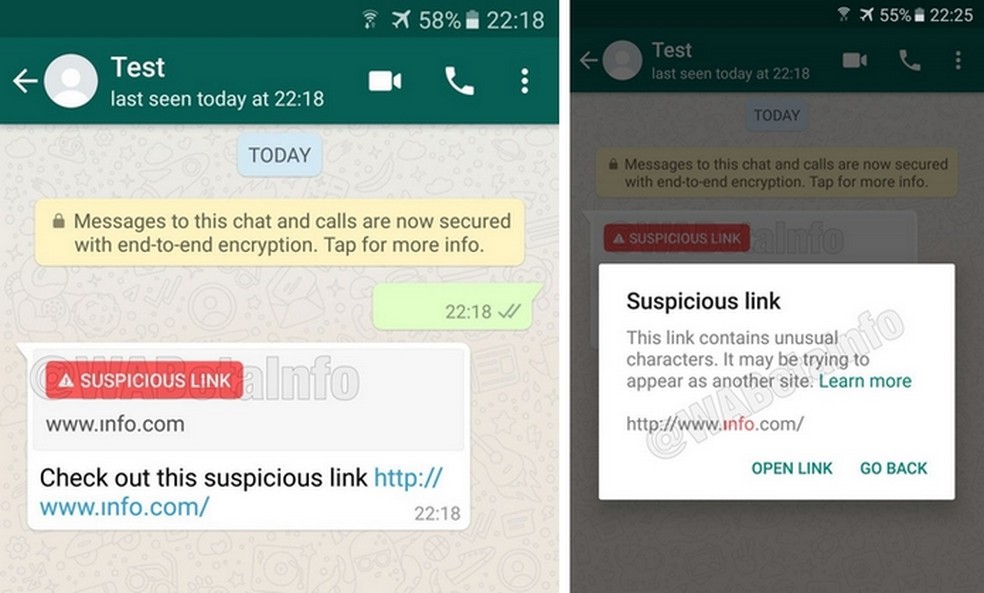WhatsApp prepares the launch of a new function to combat the scams and spam that circulate in the messenger. For now called Suspicious Link Detection ("suspicious link detection" in free translation), the resource should analyze the pages sent and received in the chat to notify the user when the link appears to be malicious. The idea would be to avoid the impulse click, one of the fundamental elements in the propagation of false news and schemes.
The tool was discovered by the website WABetaInfo, specialized in leaking information about the messenger used by 120 million Brazilians. In May, during the truckers' strike, WhatsApp was used for a scam that led to a criminal website. Likewise, the recent consultation with PIS / Pasep reached more than 100,000 people in just 24 hours.

WhatsApp should launch suspicious link detection tool to fight spam Photo: Ana Marques / dnetc
How to control the time spent on WhatsApp
According to the publication, WhatsApp analyzes the URL for unusual characters to identify fake websites. In several strokes, the bandits exchange a letter from a trusted address for a special character that resembles it. As if, for example, instead of Techtudo.br was written echtudo.br, with the name of the portal beginning with a special character.
If the application finds something strange on the link, the corresponding message marked with a red label Suspicious link. In addition, if the user tries to open it, the messenger displays a new alert explaining that the URL is potentially malicious and may be impersonating another site. The user then has the option to return (Go Back) or actually open the link (Open link).

Prints of WhatsApp with suspicious links feature working Photo: Reproduo / WABetaInfo
The publication did not make it clear whether all the information conveyed originates exclusively from self-tests or whether there is also data from other sources. Anyway, the site claims that the links are evaluated only on the cell phone, without the content of messages being sent to the central computers of WhatsApp.
The messenger employs end-to-end encryption. In practice, this means that not even the service itself can intercept the content exchanged in the chats.

Web pages shared by the messenger may contain special characters Photo: Reproduo / Raquel Freire
Initiatives to prevent falsification of news
WhatsApp seeks alternatives to combat rumors and counterfeits. This month, the app announced a campaign against fake news. The initiative offers 20 grants of US $ 50 thousand (about R $ 195 thousand, in direct conversion) for studies that help to stop the proliferation of these contents through the messenger.
The idea is to bring together researchers who deal with the phenomenon, in an attempt to better understand how it works to create more efficient combat measures without jeopardizing users' privacy.
In addition, the messenger released on Tuesday (10) the message sent. Provision was made to make it clearer to the user when the content was not written by the friend, but was passed on from another conversation. Due to the encryption system, the name of the originator of the message is not disclosed; likewise, the author is unaware that his message has been forwarded.
With information: WABetaInfo
How to talk to someone on WhatsApp without adding to contacts? Find out on Frum dnetc

Smarter WhatsApp: learn how to use automatic responses
